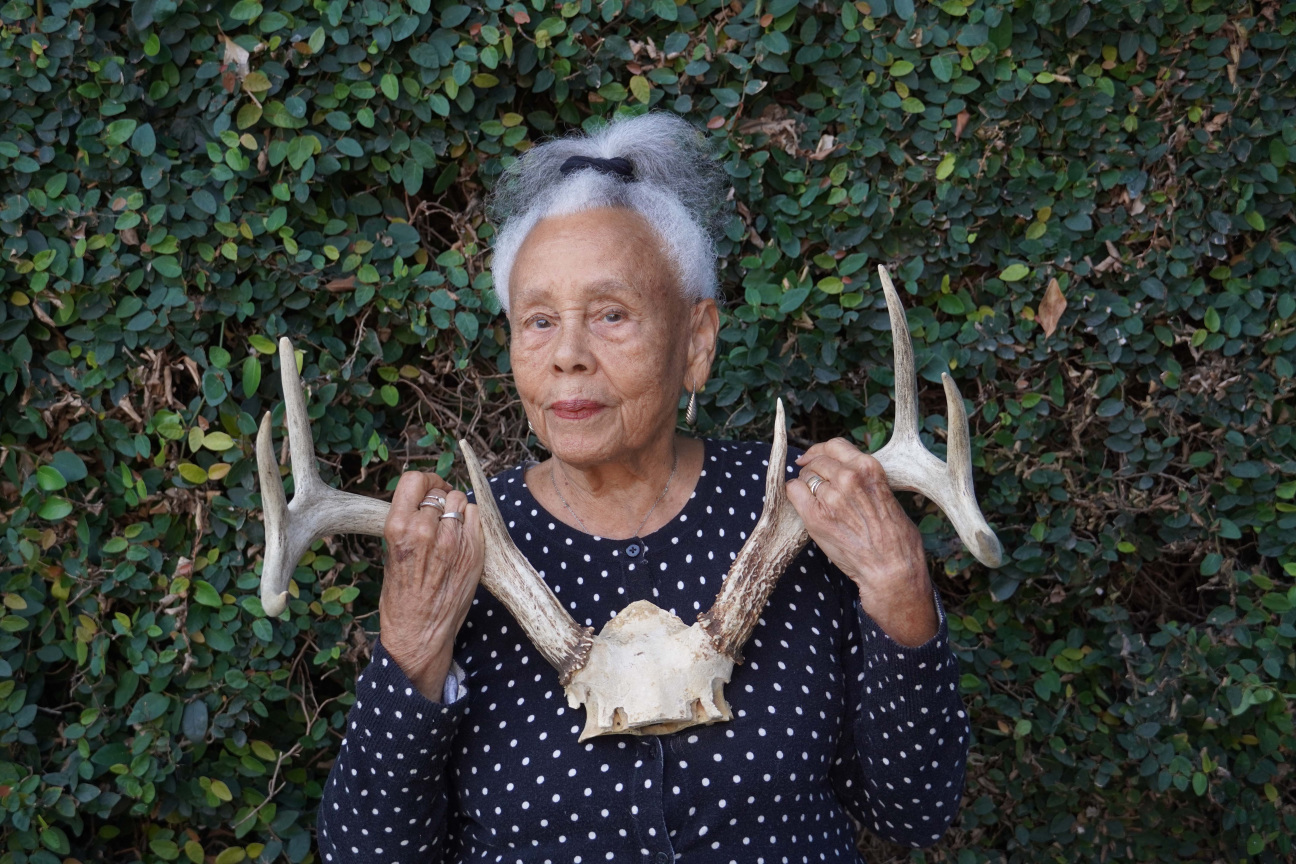
As a child, Betye Saar witnessed the construction of the Watts Towers from broken glass, rusty tools, and seashells, and determined that history is best represented in the detritus of real people’s lives. Now 97, the mixed media artist has demonstrated that conviction during a 50-year career, using found objects to articulate the Black American experience and critique its commodification.
Though she’s sworn off of deadlines, when she spoke to CULTURED, Saar had one more museum show in the works, "Drifting Toward Twilight," now on view at The Huntington in Saar’s native Los Angeles.
CULTURED: What was your first taste of the art world?
Betye Saar: In the late 1960s, I was lucky to meet Alonzo and Dale Davis and Suzanne Jackson, who had art galleries here in LA. I had exhibits with David Hammons and John Outterbridge. We all became good friends. It was hard to be a woman of color and to get a gallery back then.
CULTURED: Was there a moment that shaped your understanding of what an artist is?
Saar: I was a curious child, and a child of the Depression. I would always be walking looking down at the ground hoping to find something. I’d pick up flattened pieces of metal, buttons, pretty scraps of paper. I collected and treasured these little things. Later, I saw Simon Rodia’s Watts Towers and loved that he made trash into art. In the '70s, I saw an exhibition of Joseph Cornell at the Pasadena Art Museum, and it all came together for me. I combined my printmaking and collecting, and suddenly it was called “mixed media assemblage."

CULTURED: When did you feel like your practice found its audience?
Saar: During the civil rights movement in the '60s and '70s, I was a young mother with small children. We lived in a remote part of Los Angeles, and it was hard for me to join the protests in person. Instead, I protested in my studio and made art to be an activist. I created the Liberation of Aunt Jemima in 1972, which seems to be my most famous artwork.
CULTURED: Who's an artist who paved the way for the work you do?
Saar: I met Charles White when he moved to Altadena. I was raised in Pasadena and was all impressed because he was a big-time artist. He told great stories about the art world, and he was always very encouraging to young artists.
CULTURED: What is one skill that was important to the art communities of your youth that seems lost today?
Saar: For years, decades really, I've always had a sketchbook or little pad of paper with me. I get ideas or see things that I like and want to remember. Pen and paper are very old school these days. When I travel, I bring an art kit with watercolor paints, brushes, and paper. Being observant and open to new ideas and influences is important for being an artist.
CULTURED: Was there a moment when you thought about leaving your practice behind?
Saar: When I got divorced in the 1970s, making art was tricky. It was hard to make a living, raise my girls, and get them through college, even with the help of their father, Richard Saar. So I was a teacher, visiting professor, and costume designer, whatever it took so that I could still make art and have a family and a house. We all turned out okay.

CULTURED: What advice would you give to a young artist who looks up to you?
Saar: I was just at the Smart Museum of Art in Chicago and met some printmaking students. I told them that sometimes you make a mistake, or the print doesn’t quite work out how you envisioned, but that is part of the process. It's okay to make mistakes and find ways to make them work for you. Keep doing it, keep experimenting, and have fun. Making art should be fun, not work.
CULTURED: How have you surprised yourself in your creative practice lately?
Saar: Well, I’m 97 now and still love making art. I do my watercolors almost every day. I thought I was done with commissions and deadlines, which make making art less fun, but I couldn’t resist saying yes to my new project for The Huntington Museum, "Drifting Toward Twilight." I’m from Pasadena and went to The Huntington as a child, so it’s full-circle art.
This interview is part of a series of conversations with female artists over the age of 75. To read more, take a look at our stories with the avant-garde Pippa Garner, Brazilian sculptor Sonia Gomes, and prolific creative Liliana Porter.










 in your life?
in your life?

